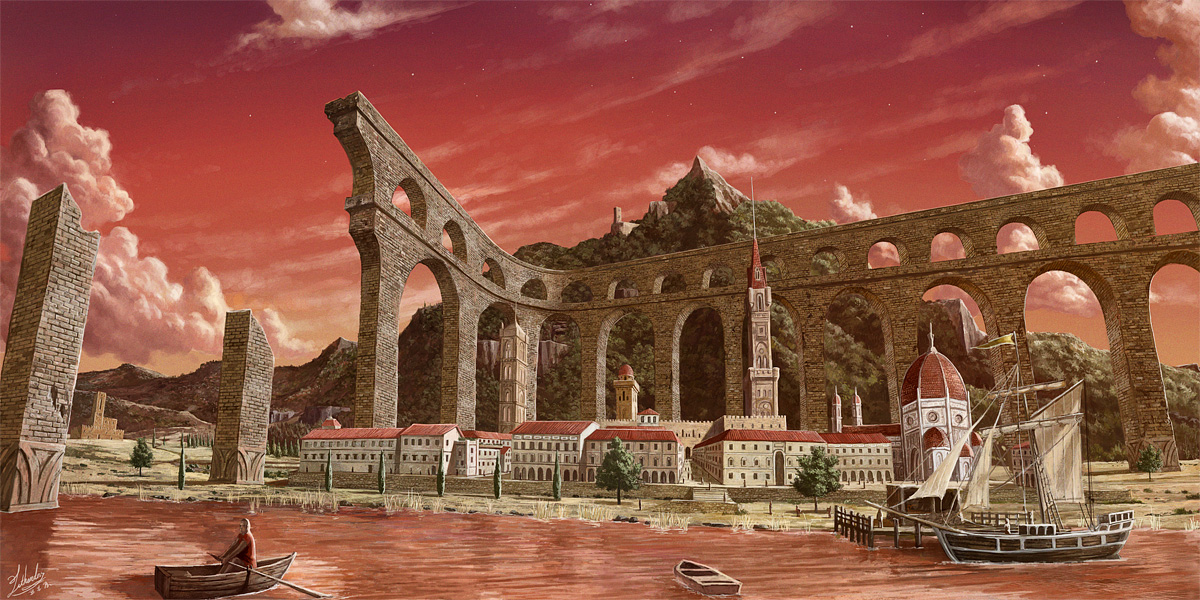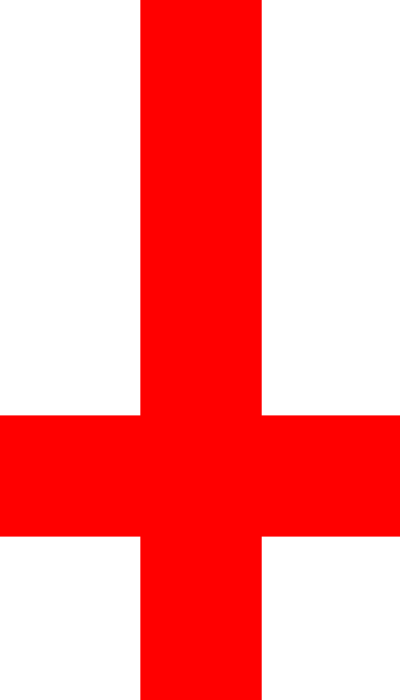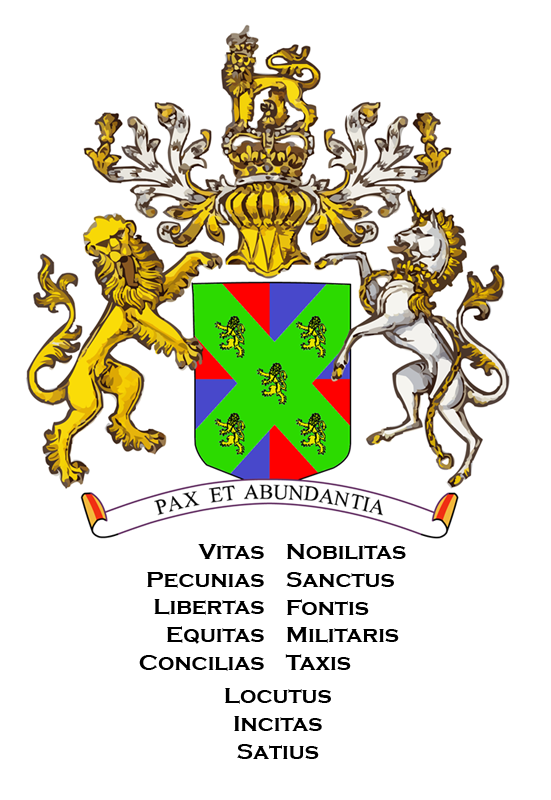The Kingdom of the Sword

| The Kingdom of the Sword | |
|---|---|
|
Flag |
|
|
Coat of Arms |
|
|
Capital | Oathkeep |
|
Largest Cities | Avila, Saillonne, Cardien, Tir Garod |
|
Status |
Defunct |
|
Official Languages | Ascadian, Uldennic |
|
Government Type |
Monarchy |
|
Leader Title | King of the Sword |
|
Current Leader |
None |
|
Current Heir |
Unknown |
|
Sovereignty Type |
Union of predecessor states |
|
Land Area |
796,500 sq. mi (at its height) |
|
Population |
8,652,000 (at its height) |
|
Gross Domestic Product |
n/a |
|
Currency |
|
The Kingdom of the Sword was a nation consisting of 18 million people in six major ethnic groups, uniting most of the race of Man in eastern Tellandor. It spanned over 2,300 years (with ~800 years of interregnum) before coming to an end in 388 GC. Its final king was Orendil, first of his name, who died in the Battle of Sundered Hill which ended the Dragons' War.
The Kingdom gets its name from the Dynasty Blade, the symbol and instrument of its rule. This ancient, magical blade of uncertain origin has chosen the successor of each king in turn, ignoring any claims by right of inheritance. The few times a blood heir has attempting to claim the kingdom in spite of the sword have ended in ruin. However, the dependence on the sword to choose each king's successor has led to two interregnums--the last of which may prove permanent--when the blade was lost.
Though the blade has chosen men, women, and on occasion others, it has never chosen any of a race other than Man. Thus, every King of the Sword has been of that race. However, the Kingdom has at times included elves, dwarves, and even dragons among its citizens, particularly during the Peace of the Oath.
At its height, the Kingdom of the Sword spanned over 800,000 square miles, consisting of five major subregions: the Heartlands, the Southern Marches, the Umberlands, the Crownlands, and the Ascadian Isles.
In modern times, the Kingdom of the Sword is often referred to as the Auld Empire.
| Flag | Coat of Arms |
|---|---|

|

|
History
At its height, the Kingdom of the Sword measured time according to the Grand Chronology, which began its first year during the raising of Oathkeep. In the past, it used the a calendar which began in the year Aristur First-King took the Dynasty Blade; that calendar began in 1982 BGC.
Dates are given in both YKS and BGC.
Pre-History (before 0 YKS / 1982 BGC)
Human history spans almost five thousand years on Tellandor before the founding the Kingdom, and for untold time before the first landing of Man on the continent.
As far as the Kingdom is concerned, this was a dark time, especially under the reign of the Druids, when Man was a weak race. His true destiny lay with the Sword, wherever it was hiding, and his greatest deeds would not be accomplished until it was found.
The Kingdom kept few records of this time, eschewing old histories for accounts of the reign of kings, exchanging old mythology for the new, universal mythology of the kingdom. Most knowledge of this era comes from modern archaeological study and the records of the Juniae.
The First Kingdom (0-1056 YKS / 1982-926 BGC)
The First Kingdom was founded when the sage Telkior bequeathed the Sword to Aristur First-King, ending the reign of The Druids over Man.
Telkior guided the King to draft the Ten Laws which became the foundation for all laws in the Kingdom for two thousand years, and ultimately for Oathkeep itself. He also oversaw the transition from the old mythology to The Great Church, albeit with some adaptation of existing elven and dwarvish deific concepts to those matching the Kingdom of the Sword's existing figures of myth and legend.
For much of the First Kingdom, the Ascadian Isles served as the base for the kingdom, and their prosperity reflects this. The capital was later moved to Uldenor, to the magnificent city of Ulden Caer. When the Crowns erupted in 1056 YKS, the capital, and the prosperous lands around it, were burned and buried under ash, and the Kingdom fell with them.
The Great Interregnum (1056-1868 YKS / 926-114 BGC)
After the fall of the old Kingdom, there was an explosion of successor states. Most lasted only as long as their first king. Soon, they stabilized into the subregions known today: Ascade, Tirnor, Dennoth, and Uldenor. Humans of First Kingdom ancestry also spread into the lands now known as Obrith and Kurland, to be later conquered in the Second Kingdom.
Civilization continued without the Sword, though the race of Man made little progress without a unified culture. Their lands began to look more attractive to Dwarves, and their people seemed insignificant to the mighty Elves.
The Return of the Sword (1868-1985 YKS / 114 BGC - 3 GC)
:Main article: Queen Rhea
The Sword was found by adventurers in the ruins of Ulden Caer, and returned to the Ascadian Isles. Virtually every nobleman tried the blade and failed; it wasn't until King Doric of Tirrith, who had to invade the island to get his chance, tried the blade without success, that his daughter finally had her try. She succeeded, and became Queen Rhea.
The newly reborn Kingdom of the Sword saw a reunited Ascade, Tirnor, Uldenor, and Dennoth. Under her reign, the lost arts and knowledge of the Kingdom were relearned, and the old laws restored (see Thirteen Laws).
:Main article: Turin#Reign|King Turin]
Her successor was King Turin, who conquered Kurland and funded many construction projects, including a massive new palace and a forum for the Senate. He died an untimely death--some say an assassination--during the early days of the Last War, when he refused to acknowledge the invasion of the Elves.
There followed a long interregnum, 25 years, during which the whole of the Last War was truly fought. The generals, especially John Calabeth, essentially ran the country, encouraging the Senate to fund their continued warfare by conquering new lands.
John became King in an unusual circumstance, where, after virtually every other candidate had been exhausted (the Senate had gone so far as to allow peasants who merely claimed to have noble blood to try the Sword), the Regency Council bore the old King's sarcophagus all the way to the front lines of battle, to give John his chance. John became King, and immediately used his power to offer a truce to the Elves, Dwarves, and Dragons.
In a short three years, King John has built Oathkeep and established The Free Lands. He has overseen the incorporation of Obrith into the Kingdom, and has cultivated good relations with the Elves, Dwarves, and Dragons, a diplomatic coup far beyond any achieved by previous Kings or Queens.
Geography
:Main article: Geography of the Kingdom of the Sword
At its height, the Kingdom of the Sword consisted of 5 major subregions:
| Subregion | Modern Realms |
|---|---|
|
The Ascadian Isles |
The Ascadian Empire |
| Tirland, Dennoth, Geldre, Kol Turin, old Galland | |
|
The Umberlands | Uldenor |
|
The Crownlands | Obrith, Brinn, Valte |
|
The Southron Marches |
The Ahrimid Empire |
The eastern border of the Kingdom was the Endless Sea.
On the north, the Kingdom was bordered by The Crowns, a moderately-tall mountain range with a few active volcanoes (though there have been no eruptions in almost a thousand years).
To the south, the Kingdom bordered the Accaust. Most of that border is a literal line in the sand, an ever-shifting boundary in arid scrub and desert, ultimately unimportant to either side.
To the west, the Kingdom bordered the Dwarven lands, divided by the great river Sorodine at The Gates. It also bordered part of the Misted Vale, a region of the High Forest.
Government
:Main article: Government of the Kingdom of the Sword
The Kingdom of the Sword is ruled by the King of the Sword, chosen by the Dynasty Blade itself. When a Dynast-King dies, he lays in an open sarcophagus, upon a funeral pyre; the fire does not go out, nor does it consume the body, as long as the body continues to hold the sword. Those who are not chosen of the blade will not be able to remove it from the old king's hands, and will be burned by the fire. When the chosen one takes the blade, it comes freely; immediately thereafter, the old king's body crumbles to ash and smothers the flame.
The last King of the Sword was Orendil, born Alvar Targun of the Stormlands. He was 41 years old, and had reigned as King of the Sword for less than 2 years.
See Notable Kings of the Sword.
During the First Kingdom of the Sword, the people of the Heartlands followed the king as the champion of the Old Gods' faith, trusting the wisdom of Telkior and the greatness of Heartland-born kings of old. Meanwhile, the Ascadians obeyed the king to the extent that it was impractical not to--a variable of each king's reign, depending on his interest in the Isles. Those who sat in Ascadia were partial to them, and those who ruled later from Ulden Caer often let the Senate do as it willed (provided the taxies and levies were paid).
In the Second Kingdom, the King ruled a much larger and more diverse area, making effective governance a greater challenge than ever before to that end. King John Calabeth ruled largely in absentia, trusting to his High Lords and the Senate back in Ascadia while attending more to foreign relations. His successors, especially Lysenia and Valentian, would create a sophisticated system of unified governance through the realm.
The Valentian System
Despite Queen Lysenia (born Lysen of Chesny, 20-56 GC) having initiated the reform of the Kingdom's government after John Calabeth's death, King Valentian (born Valen of Annestria, reigned 98-123 GC) is more commonly associated with them, perhaps because his reforms affected people on a more personal level.
Lysenia called for a new network of roads, centered upon the Road to the Dawn, to connect the new and sparse realms of the Crownlands to the older lands further east. In her lifetime, it became possible to travel by cart from Oathkeep to Tir Garod without ever leaving a highway. She established a formal system of taxation, calling upon the High Lords, her vassals, to deliver goods and levies according to the wealth of their lands. These taxes were used to fund the Dawnguard, a permanent standing army loyal directly to the King of the Sword, who would help defend the realm...as well as ensure its stability against any malcontents within.
Valentian, facing growing challenges from the multitude of cultures, languages, and economic systems within his lands, took the reforms further. He established Auld Ascadian as the official language of the realm--a move disliked by most of the Crownlands and Heartlands of Tir, who largely spoke dialects of Uldennic and Tirrith respectively--but it did facilitate better communication between the distant ends of the realm. He unified the system of coin, creating the Silver Crown and the Silver Shilling, many of which are still in circulation today. Finally, he mandated that, for reasons of administrative record-keeping, all men and women must have two names: one given and one of their family. Other appelations were not important to the realm, but the family name was, and it passed by law along the father's line. This practice gradually faded among common folk, moreso during the Time of Darkness, but has in recent centuries been partially revived by the reforms of Nehrval the Esteemed.
Valentian's system of government held more or less intact until the fall of the Kingdom two and a half centuries later. In this time, the King was an absolute monarch, ruling by divine right (as Valentian had converted to the faith of The One in his old age), with every man and woman in the realm his subject. The role of High Lords faded, as the highly bureaucratic government took a great interest in each individual's life; at its height, the centralized government employed more than 10% of all citizens of the realm.